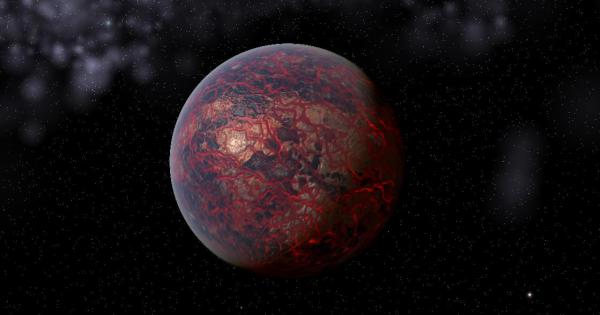BY LETTER
Hephaestian type worlds
Hot planets with molten rocky surfaces | |
Image from Steve Bowers | |
| Hephaestus, a thermohephaestian planet with a thick atmosphere, in the Tau Ceti system | |
These are the most active of planets, with surfaces that are almost entirely molten and a geology that changes on a yearly basis. The atmospheres of these planets vary greatly according to the world's size and mass, from having thick, Cytherean-like atmospheres to almost non-existent ones, where the feeble gravity loses any elements almost as soon as they are released from the surface. Composition of these atmospheres is dominated by chemical species originating from volcanic erruptions and outgassing events. Depending on the makeup of the planet various sulfur oxides, carbon oxides, hydrocarbons, halocarbons, water, and both molecular and atomic oxygen and sulfide have been recorded as major components of Hephaestian atmospheres. The chaotic hostile environment of Hephaestian worlds often proves a challenge to survive in.
These worlds are generally heated by proximity to a star due to direct radiation (subtype ThermoHephaestian) or by tidal flexing as a moon of a gas giant (subtype EuHephaestian). Some worlds are heated significantly by tidal effects from their planetary neighbors. As is often the case there are a number of rare outliers worldsthat don't neatly fall into a classification. This include Hephaestian that are heated by an unusually large number of radioactive isotopes and those that sustain prolonged bombardment by impactors.
Early in their life cycle most naturally occurring terrestrial type worlds initially resemble Hephaestian worlds superficially. With completely or partially molten surfaces that eventually cooldown on the timescale of tens of thousands to millions of years.
Examples: Io (EuHephaestian), Ixion, Hephaestus (ThermoHephaestian).
 Image from Steve Bowers | |
| Ixion, a thermohephaestian planet with a thin atmosphere, in the Alpha Centauri system | |
Related Articles
Appears in Topics
Development Notes
Text by Mark Ryherd
Initially published on 11 May 2013.
Initially published on 11 May 2013.






